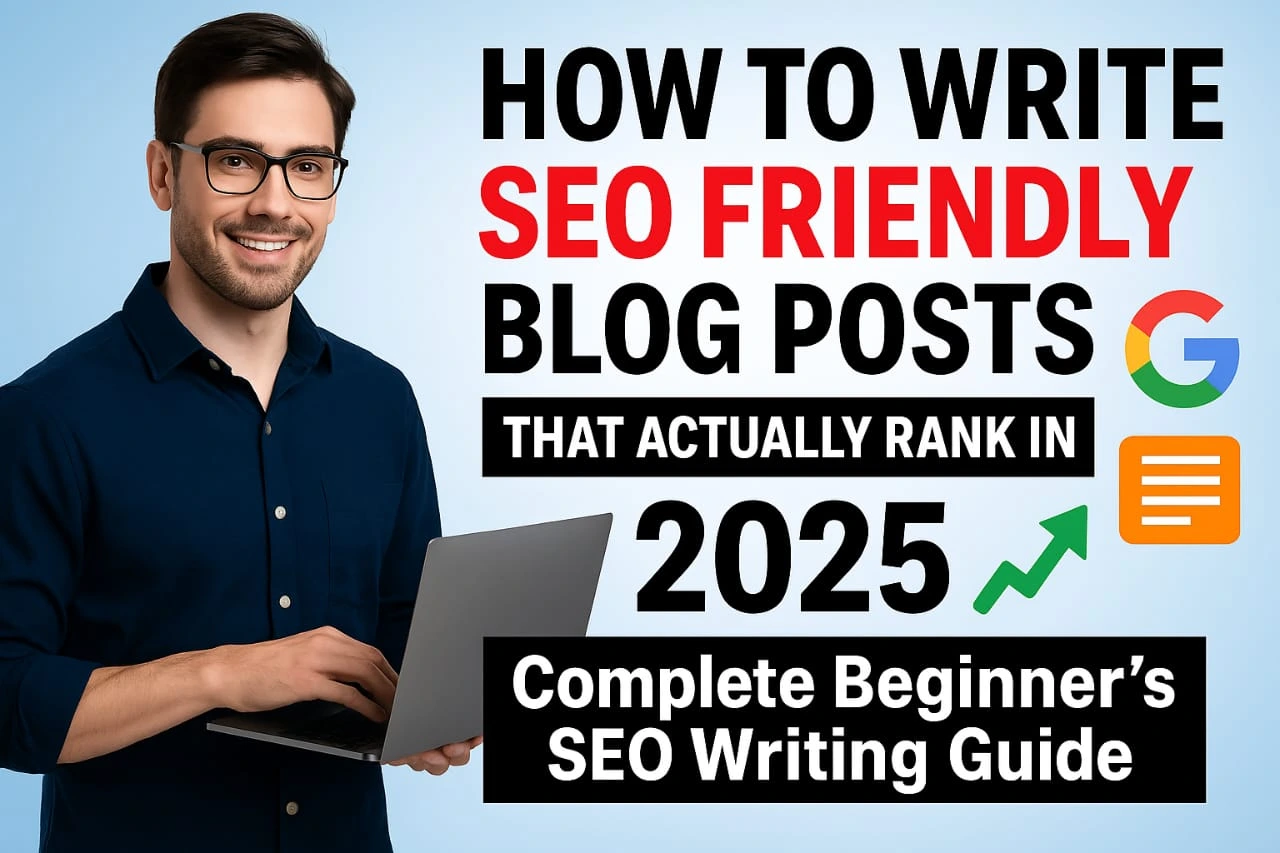You ever write something and feel like nobody ever saw it?
Yeah… same.
The internet’s packed with content, and honestly, most blog posts get buried. Not because they’re bad—but because they never had a real shot at ranking.
See, writing a post that actually shows up on Google in 2025 isn’t about stuffing in keywords or following some secret formula. It’s about knowing your reader, solving a real problem, and making your post ridiculously useful.
Let me break it down for you—step by step, the way I do it.
Step 1: Know What People Are Looking For (Not What You Think They Want)
Most new bloggers just write whatever’s on their mind. But here’s the thing:
If nobody’s searching for it, it won’t get found. Period.
So before you start writing, Google your topic.
Seriously—type it in and see what pops up.
- Are people looking for a tutorial?
- A list?
- A comparison?
Whatever shows up in the top 3–5 spots, that’s the intent. Match that format.
This part is about listening, not guessing.
Step 2: Stop Chasing Big Keywords. Go Specific.
Don’t try to rank for “SEO.” That ship sailed.
Instead, go for something like:
- “How to structure a blog post for beginners”
- “Step-by-step guide to writing SEO content”
These are called long-tail keywords.
They may not bring millions of visitors, but they’re easier to rank for—and those who search for them are usually serious.
Use Google’s auto-suggest. Type a word and see what it finishes with. You’ll be surprised how useful that is.
Step 3: Write Like a Real Person Talks
This one’s important.
Don’t write like a robot. Don’t write like a textbook. Write like you’re talking to someone sitting across from you.
Here’s how:
- Use “you” and “I”
- Ask questions
- Use short sentences, fragments, even the occasional “So…” or “Yep.”
- Don’t worry about perfect grammar—just be clear and honest
Example:
“When I first started writing, I overthought every line. You don’t need to. You just need to help the reader get from confused → clear.”
That hits differently, right?
Step 4: Use a Structure That Makes Sense
People don’t read online—they scan. So help them out.
Your post should look like this:
- A hooky intro that speaks to their problem
- Section headings that guide them through
- Bullet points where it helps
- Clear takeaways or steps
- A final note that wraps it all up (not just “Thanks for reading”)
Also: break up long paragraphs. Nobody likes reading a block of text that looks like a school essay.
Step 5: Basic SEO Stuff (That Still Matters)
You don’t need to become an SEO guru, but do get these things right:
| What | Why It Matters |
|---|---|
| Title | Make it clear, clickable, and useful |
| URL | Keep it short and simple (no dates or clutter) |
| Meta description | It’s what shows in search—make it punchy |
| Headings | Use H2 and H3 properly; avoid stuffing |
| Images | Compress them + use alt text that actually describes the image |
| Internal links | Link to your own posts naturally |
| External links | Link to trustworthy sources that add value |
Need help with this? RankMath is a free plugin that’ll walk you through most of it.
Step 6: Help Google Understand You (Schema Stuff)
Okay, stay with me.
This isn’t as technical as it sounds.
Schema markup is just behind-the-scenes code that tells Google what kind of content you’re publishing. Think of it like labeling your post in a way search engines love.
- Got a tutorial? Use How-To Schema
- Answering common questions? Use FAQ Schema
- Regular post? Use Article Schema
The easiest way? Use the RankMath or WPCode plugin—it’s like flipping a switch.
Want me to send you ready-made schema code? Just ask.
Step 7: Share It Like You Mean It
Even great posts need a push.
After publishing:
- Share a tip or quote from it on Twitter or Threads
- Post a summary on LinkedIn or Medium with a link back
- Join a few Facebook or WhatsApp blogger groups
- Answer a related question on Quora and drop your link
- Make a short reel or video explaining the topic
Don’t be shy. People need what you’ve written—they just don’t know it yet.
Bonus: Keep It Fresh
Come back to your post in 3 months.
Update the date, tweak a stat, add a section if needed.
Google loves fresh content—and so do readers.
FAQ
How long should a blog post be in 2025?
Around 1,500–2,000 words usually works great. But don’t write longer just for the sake of it—write what’s needed to explain the topic fully.
Can I rank without backlinks?
Yes. Especially if you go after low-competition topics and your content is solid.
How do I know if a post is working?
Check Google Search Console. If it’s getting impressions, you’re on the right track. If not—go back and make it better.
Final Thoughts
Look, writing blog posts that rank isn’t about being perfect. It’s about being helpful.
Solve one real problem, explain it clearly, and write like you care.
That alone puts you ahead of 90% of bloggers out there.
You don’t need tricks. You just need to show up and serve.
Written by Jamil Akhtar
Find more no-nonsense guides at abtechhubs.com


